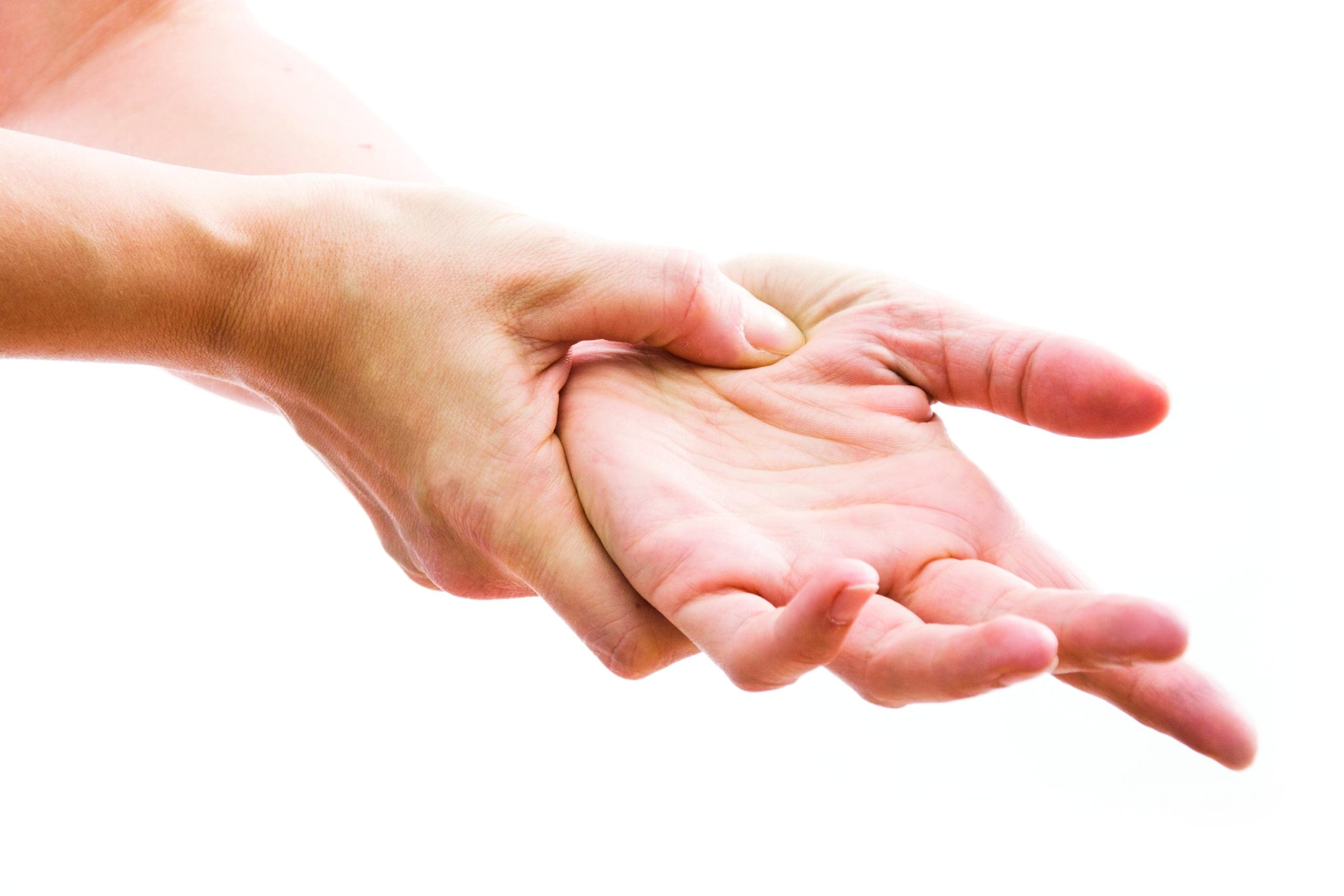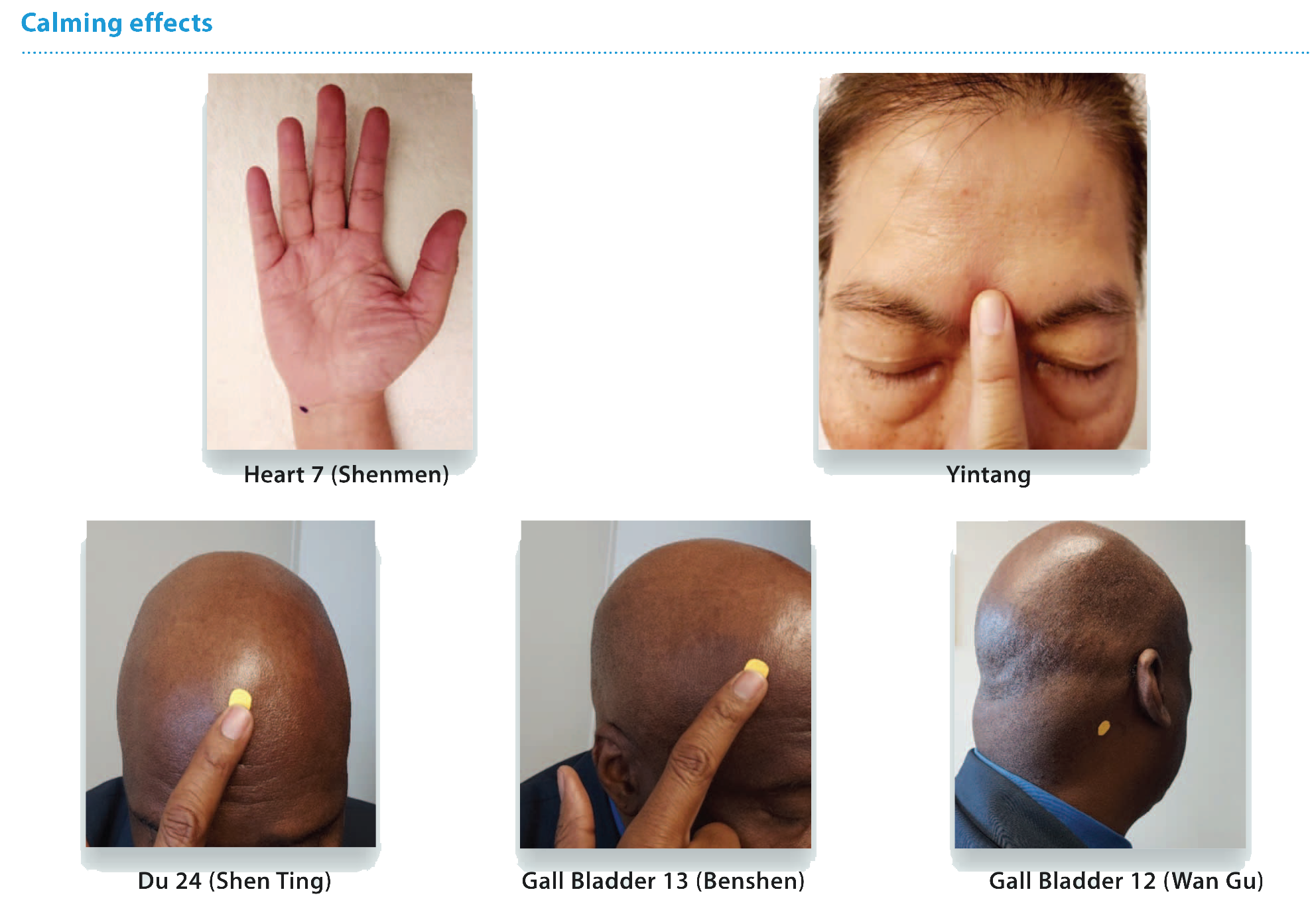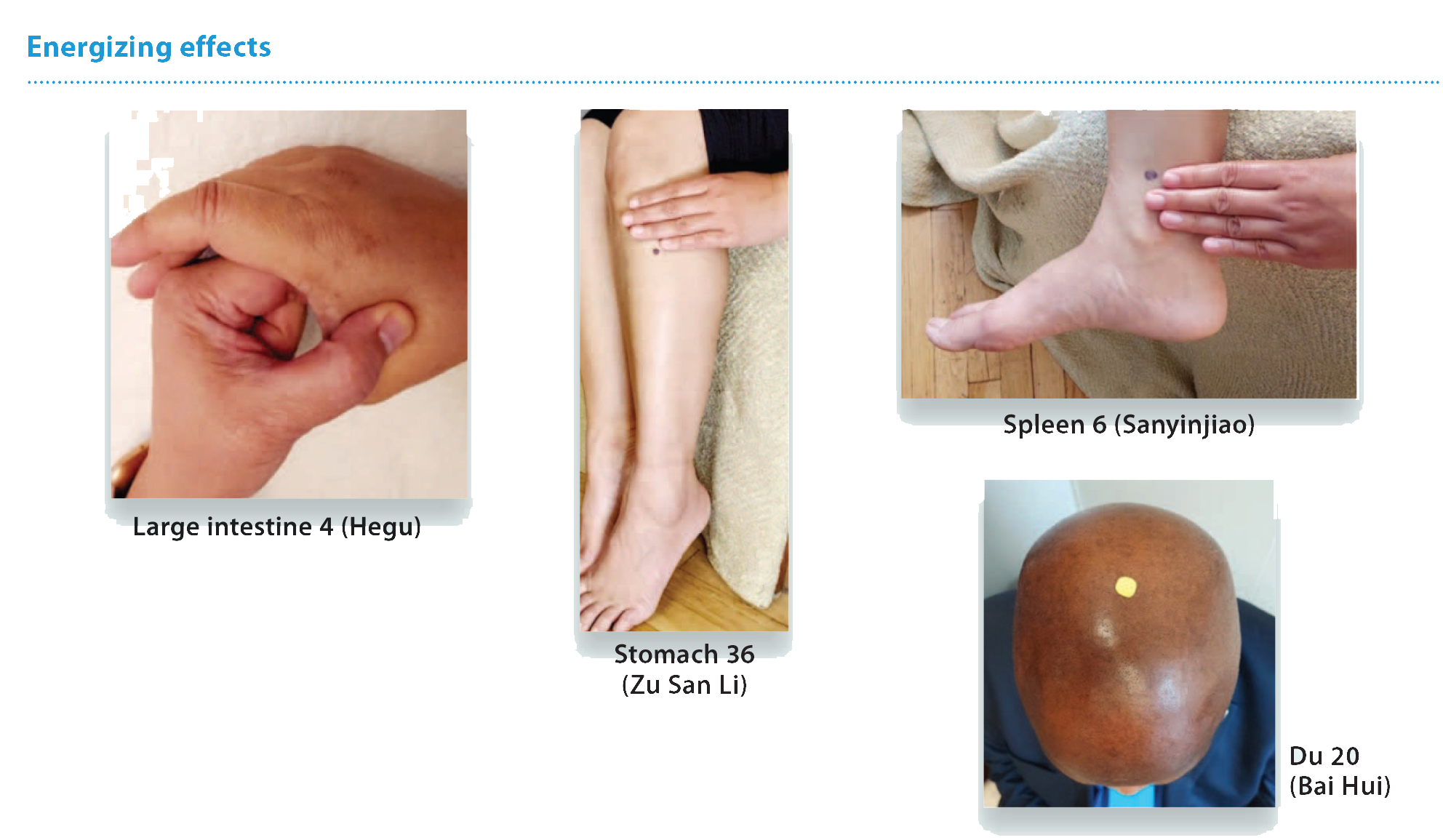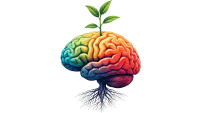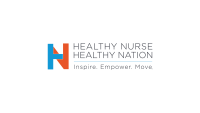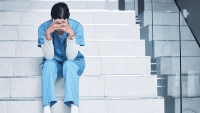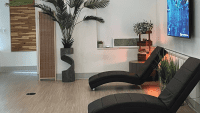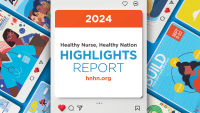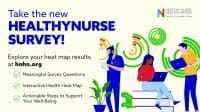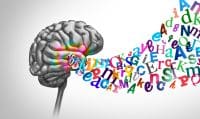In-the-moment self-care brings calming and energizing effects.
- Acupoints in traditional Chinese medicine balance energy (Qi) flow with calming and energizing effects.
- Self-acupressure offers a convenient, discrete, no-cost, evidence-based method to manage stress and fatigue.
- Self-acupressure can be added to the nurse’s self-care toolbox.
The fatigue and stress experienced by nurses require self-care, but lack of time or space may prove challenging in a clinical setting. Self-acupressure offers an option for boosting energy and enhancing calm without much time investment. Evidence supports the positive effects of acupressure for stress and fatigue in patient populations, which can be applied to healthy populations, including nurses, who can use it in the moment to calm and energize.
Acupressure and acupoints
The principles of traditional Chinese medicine (TCM), which has a 2,000-year history, base health and illness on the balance of energy flow or Qi (pronounced “chee”) throughout the body. Qi imbalances are believed to cause illness and disease. Treatments to rebalance Qi include acupuncture, acupressure, and herbs.
TCM describes 12 main body meridians—10 symmetrical meridians on each side of the body and two on the body’s midline (anterior and posterior). Most acupoints sit along meridians (channels) and energetically connect to organ systems. Acupressure uses acupoints to stimulate, move, enhance, or modulate energy to achieve Qi balance and well-being.
Although not conclusive, research supports the hypothesis that acupuncture principles work on autonomic nervous system activities. Despite the scientific research controversy, many embrace these treatment modalities for their effects on pain, stress, and fatigue. Evidence suggests the general safety of self-acupressure and its effectiveness in reducing perceived stress and fatigue among nurses. However, take caution if you bruise easily; note that some acupoints are contraindicated in pregnancy, and remember that self-acupressure isn’t a substitute for standard medical care.
Several methods and tools exist for applying pressure to acupoints, but using the thumb or index fingertips usually is sufficient. Apply light pressure, equivalent to pressing a grape against a hard surface without bursting it, intermittently for 1 to 3 minutes at each pressure point. Calming and energizing effects may vary as individual factors contribute to stress and fatigue. (See Acupoint locations.)
Calming acupoints
Before using calming acupoints, assess your stress level using a numeric scale (0 = no stress and 10 = maximum stress). Then evaluate your stress level immediately after acupressure and periodically to determine the effectiveness and need for further acupressure.
Use the points listed below, one at a time or in combination. For example, if you use an acupoint and achieve a satisfactory calming effect, other acupoints may not be needed. Individual differences may affect acupoint preference. For example, you may find that one particular point is more calming than another. Some calming points produce a very relaxed state and may be more appropriate for use close to bedtime.
Heart 7
The Heart 7 acupoint, also called Shenmen (Spirit Gate), is known for its calming quality and relief of stress that affects the heart (for example, emotional stress or increased heart rate). You can use it as needed throughout the day. Heart 7 sits on the Heart Meridian, which travels from the axillae proximally to the distal part of the fifth digit on the medial side of the arm.
Method: To locate Heart 7, open your hand with the palm facing up. Locate the acupoint at the ulnar end of the wrist crease, between the pisiform bone and the distal tip of the ulnar. Using the thumb or the index fingertip on the opposite hand, apply moderate pressure for 10 to 15 seconds, release for 5 seconds, and repeat for 3 minutes. Alternate method: Rub Heart 7 in a small back-and-forth motion proximally and distally for the same duration.
Effects: Heart 7 helps relieve stress accompanied by an increased heart rate. Acupressure of Heart 7 may result in stress reduction that accompanies normalizing the heart rate.
Yintang
Yintang (Hall of Impression), known as the third eye or Ajna chakra, is used for calming and enhancing focus. Located at the midpoint between the eyebrows, this acupoint doesn’t sit on a meridian.
Method: Locate the Yintang between the eyebrows. Use your index finger to apply light pressure for 10 to 15 seconds, release for 5 seconds, and repeat for 3 minutes. Alternate method: Lightly massage Yintang in a small clockwise circle for 2 to 3 minutes.
Effects: Generally calming, Yintang also helps to reduce stress associated with a lack of mental focus. Applying pressure to Yintang can prompt taking slow deep breaths. The rationale for this phenomenon is unclear, but slow deep breaths add to calming effects. You can use this acupoint two to three times a day as needed.
Du 24
Du 24, also known as Shen Ting (Spirit Courtyard), provides calm and uplift. It’s located just inside the middle of the anterior hairline.
Method: If you’re unsure of your hairline when locating Du 24, note that the acupoint sits approximately four finger widths above the level of the eyebrows. Using the tip of your index finger, apply light pressure for 10 to 15 seconds, release for 5 seconds, and repeat as needed for 3 minutes.
Effects: Du 24 aids the relief of stress associated with sadness.
Gallbladder 13
Gallbladder 13, also known as Benshen (Root Spirit), sits close to the ophthalmic branch of the trigeminal nerve, which has connections to parasympathetic nerve fibers. Some believe that acupoints close to cranial nerve branches may have calming effects because of their association with parasympathetic contributions.
Method: To find Gallbladder 13, use the index finger to locate the eye’s outer canthus and draw an imaginary line directly upward to just inside the anterior hairline. The left and the right Gallbladder 13 sit symmetrically inside the anterior hairline. You can use both points at the same time. Use the tip of your index finger to apply light pressure for 10 to 15 seconds, release for 5 seconds, and repeat for 3 minutes. Alternate method: Apply pressure on Gallbladder 13 and Du 24 at the same time.
Effects: Gallbladder 13 can provide calming effects that make it helpful before sleep. You can use this acupoint two to three times throughout the day as needed. More frequent use isn’t contraindicated, but it may make you feel too relaxed for shift work.
Gallbladder 12
Gallbladder 12, also known as Wan Gu (Completion Bone), is located behind the ear, posterior and inferior to the mastoid process. Neck muscles attached to the mastoid process frequently tighten under stressful conditions, making Gallbladder 12 sensitive to pressure.
Method: To locate Gallbladder 12, place your index finger over the prominence of the mastoid process and move the finger slightly posterior and inferior—it sits on the lower border of the mastoid bone. Tense neck muscles may cause tenderness in this acupoint. Apply moderate pressure with the tip of the index fingers bilaterally for 10 to 15 seconds, release for 5 seconds, and repeat for 3 minutes. Alternate method: Apply pressure by massaging this acupoint.
Effects: Gallbladder 12 aids the relief of stress-associated neck tension.
Energizing acupoints
Use energizing acupoints in the morning or before and toward the end of the work shift when you might need an additional boost. Avoid using them before bedtime.
In a review of the evidence, Hsieh and colleagues found that acupressure can prove effective for cancer-related fatigue. In addition, the National Comprehensive Cancer Network (NCCN) guidelines include acupuncture and acupressure as modalities for managing fatigue.
Depending on factors such as chronic or severe fatigue, energizing acupoints may not have an immediate effect. Also consider signs of disease processes that contribute to fatigue, such as anemia, autoimmune disorders, and endocrine imbalances. Assess your fatigue level on a 0-to-10 scale (0 = no energy, 10 = normal energy) before acupressure, re-evaluate it immediately after, and again after a week of daily acupressure. You can use single energizing acupoints or in combination.
If using these acupoints causes you to feel overly energized, consider using calming points. Note that Large Intestine 4 and Spleen 6 are contraindicated in pregnancy.
Large Intestine 4
Large Intestine 4, also known as He Gu (Converging Valley), has a reputation for treating pain. For this reason, it’s one of the most studied acupoints. Large Intestine 4 has many indications. As a vital energy point, it provides value when combined with other energizing acupoints. It’s located on the dorsum of the hand, radial to the midpoint of the second metacarpal bone.
Method: Place the opposite thumb on the Large Intestine 4 acupoint and the index finger on the palmar side to support the pressure applied by the thumb. This point might feel sensitive. Apply light pressure for 10 to 15 seconds, release for 5 seconds, and repeat for 1 to 3 minutes. Alternate method: Lightly massage the acupoint. Large Intestine 4 is contraindicated in pregnancy.
Effects: Use Large Intestine 4 for fatigue accompanied by a dull headache or fatigue related to constipation. You also may find the acupoint calming and helpful for stress-related fatigue.
Stomach 36
In TCM, Stomach 36, known as Zu San Li (Leg Three Miles), is used to provide enough energy to walk for 3 more miles. In practice, this acupoint has multiple indications, such as to relieve general GI discomfort and leg weakness and to support general health. It’s located anteriorly 2 to 3 inches below the patella.
Method: To locate Stomach 36, use the hand on the same side to align the index finger to the bottom border of the patella. The fifth digit will be at the level of Stomach 36, and the point is just lateral to the tibial crest. The point feels like an indentation on the tibialis anterior muscle. You can use Stomach 36 alone or in combination with other points. Apply light or moderate pressure to Stomach 36 for 10 to 15 seconds, release for 5 seconds, and repeat for 1 to 3 minutes. You can use Stomach 36 multiple times a day.
Effects: Because of its energizing properties, use this acupoint in the morning or before a work shift. If your energy wanes toward the end of a shift, perform Stomach 36 self-acupressure; however, don’t use it too close to a planned sleep schedule.
Spleen 6
Three meridians (Spleen, Kidney, and Liver) converge at Spleen 6, which is known as Sanyinjiao (Three Yin Intersection). In theory, these meridians pass through the uterus, so according to TCM theory, this acupressure point plays a role in several gynecological issues.
Method: Use the left hand to locate the right Spleen 6 and the right hand to locate the left Spleen 6. Align the fifth digit with the level of the medial malleolus; Spleen 6 is at the level of the index finger next to the tibial border. The point feels like a slight indentation along the medial of the tibial border. Spleen 6 may feel tender to moderate pressure, especially for those who walk a lot, such as nurses. Apply light pressure to Spleen 6 for 10 to 15 seconds, release for 5 seconds, and repeat for 1 to 3 minutes. You can use Spleen 6 several times a day. Spleen 6 is contraindicated in pregnancy.
Effects: You can combine Spleen 6 with other acupoints for fatigue. According to TCM theory, stimulating Stomach 36 and Spleen 6 together supports overall energy balance. As a single acupoint, Spleen 6 can alleviate primary dysmenorrhea and premenstrual syndrome and also induce labor. Spleen 6 as a single acupoint has a calming effect, especially for stress associated with menstruation or after childbirth.
Du 20
Known as Bai Hui (Hundred Convergences), Du 20 is the highest acupoint on the body. According to TCM, it pulls the body’s energy upward. It’s located on the top of the head.
Method: To locate Du 20, place the index fingers on the highest point of the ear and draw an imaginary line to the top of the head. Apply moderate pressure with the index fingertip for 5 to 10 seconds, release for 5 seconds, and repeat for 1 to 3 minutes.
Effects: Use Du 20 for fatigue associated with a heavy sensation, overactive thoughts, stress, or a feeling of being pulled downward. If you have excess energy, you also can use Du 20 for calming effects.
Energizing acupoint activation is based on the principle of moving and balancing energy, so if you’re depleted, acupressure may not work as intended. In TCM, humans gather energy by eating and exercising. Factors such as overwork, poor nutrition, and lack of sleep can deplete energy and cause fatigue, so self-care shouldn’t rely on self-acupressure alone.
Self-assess, self-care
Self-acupressure provides a safe, no-cost, evidence-based method to manage stress and fatigue. Assess your stress and fatigue levels, then use acupressure to help reduce stress and enhance energy as needed. Other acupoints can be used for stress and fatigue, but they require individual assessment by a qualified acupuncturist.
Jutara Srivali Teal is an assistant professor at California State University Fullerton and a self-employed licensed acupuncturist in private practice in Long Beach, California.
American Nurse Journal. 2024; 19(1). Doi: 10.51256/ANJ012462
References
Andrews H, Tierney S, Seers K. Needing permission: The experience of self-care and self-compassion in nursing: A constructivist grounded theory study. Int J Nurs Stud. 2020;101:103436. doi:10.1016/j.ijnurstu.2019.103436
Baskan SA, Tan M. Effect of acupressure on fatigue in patients with chronic obstructive pulmonary disease. Int J Caring Sci. 2020;13(2):804-11.
Cho Y, Joo J-M, Kim S, Sok S. Effects of meridian acupressure on stress, fatigue, anxiety, and self-efficacy of shift-work nurses in South Korea. Int J Environ Res Public Health. 2021;18(8):4199. doi:10.3390/ijerph18084199
Derya Ister E, Altinbaş Y. The effect of acupressure on anxiety and pain among patients undergoing coronary angiography: A randomized controlled trial. Holist Nurs Pract. 2022;36(6):E57-63. doi:10.1097/HNP.0000000000000553
Duan G, Chen Y, Pang Y, et al. Altered fractional amplitude of low-frequency fluctuation in women with premenstrual syndrome via acupuncture at Sanyinjiao (SP6). Ann Gen Psychiatry. 2021;20:29. doi:10.1186/s12991-021-00349-z
Fan AY, Wang DD, Ouyang H, et al. Acupuncture price in forty-one metropolitan regions in the United States: An out-of-pocket cost analysis based on OkCopay.com. J Integr Med. 2019;17(5):315-20. Doi:10.1016/j.joim.2019.06.003
Hsieh S-H, Wu C-R, Romadlon DS, Hasan F, Chen P-Y, Chiu H-Y. The effect of acupressure on relieving cancer-related fatigue: A systematic review and meta-analysis of randomized controlled trials. Cancer Nurs. 2021;44(6)E578-88. doi:10.1097/NCC.0000000000000997
Kanza Gul D, Solt Kirca A. Effects of acupressure on preoperative acute anxiety in cesarean section under spinal anesthesia: A double-blind randomized controlled study. Holist Nurs Pract. 2020;34(6):356-64. doi:10.1097/HNP.0000000000000413
Khanghah AG, Rizi MS, Nabi BN, Adib M, Leili EKN. Effects of acupressure on fatigue in patients with cancer who underwent chemotherapy. J Acupunct Meridian Stud. 2019;12(4):103-10. doi:10.1016/j.jams.2019.07.003
Kim J, Kim S-R, Lee H, Nam D-H. Comparing verum and sham acupuncture in fibromyalgia syndrome: A systematic review and meta-analysis. Evid Based Complement Alternat Med. 2019:8757685. doi:10.1155/2019/8757685
Kwon CY, Lee B. Acupuncture or acupressure on Yintang (EX-HN 3) for anxiety: A preliminary review. Med Acupunct. 2018;30(2):73-9. doi:10.1089/acu.2017.1268
Ma Q. Somato-autonomic reflexes of acupuncture. Med Acupunct. 2020;32(6):362-6. doi:10.1089/acu.2020.1488
National Comprehensive Cancer Network. Cancer-related fatigue. Clinical practice guidelines in oncology. J Natl Compr Canc Netw. 2023;1(3):308-31. doi:10.6004/
jnccn.2003.0029
Riegel B, Dunbar SB, Fitzsimons D, et al. Self-care research: Where are we now? Where are we going? Int J Nurs Stud. 2021;116:103402. doi:10.1016/j.ijnurstu.2019.103402
Sand-Jecklin K, Reiser V. Use of seva stress release acupressure to reduce pain, stress, and fatigue in patients hospitalized for cancer treatment. J Hosp Palliat Nurs. 2018;20(6):
521-8. doi:10.1097/NJH.0000000000000484
Son C-G. Clinical application of single acupoint (HT7). Integr Med Res. 2019;8(4):227-8. doi:10.1016/j.imr.2019.08.005
World Health Organization. WHO benchmarks for the practice of acupuncture. May 16, 2021. who.int/publications/i/item/978-92-4-001688-0
Yeni K, Tulek Z, Terzi M. Effect of self-acupressure on fatigue in patients with multiple sclerosis. Complement Ther Clin Pract. 2022;47:101572. doi:10.1016/j.ctcp.2022.101572
Key words: acupressure, acupoints, Qi, energizing, calming, self-care

